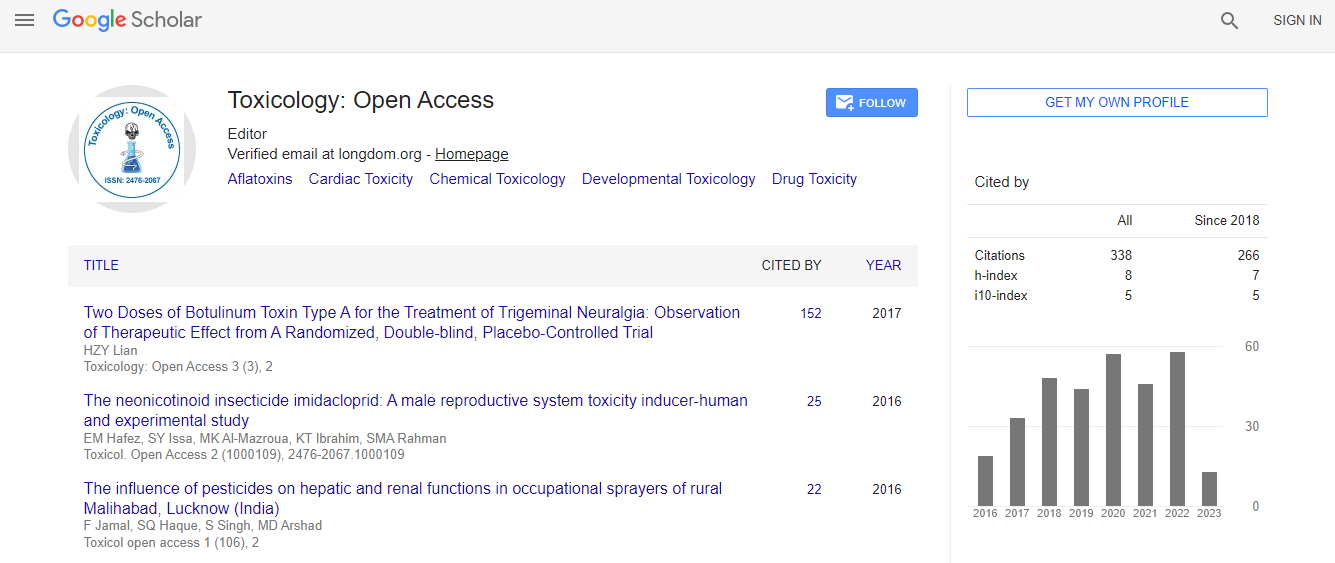Our Group organises 3000+ Global Conferenceseries Events every year across USA, Europe & Asia with support from 1000 more scientific Societies and Publishes 700+ Open Access Journals which contains over 50000 eminent personalities, reputed scientists as editorial board members.
Open Access Journals gaining more Readers and Citations
700 Journals and 15,000,000 Readers Each Journal is getting 25,000+ Readers
Google Scholar citation report
Citations : 336
Toxicology: Open Access received 336 citations as per Google Scholar report
Indexed In
- Google Scholar
- RefSeek
- Hamdard University
- EBSCO A-Z
- Geneva Foundation for Medical Education and Research
- Euro Pub
- ICMJE
Useful Links
Related Subjects
Share This Page
Nanofiber sheets using small intestinal sub-mucosa for skin wound healing
14th World Congress on Toxicology and Pharmacology
Minju Kim
Ajou University, South Korea
Posters & Accepted Abstracts: Toxicol Open Access
Abstract
Currently, various wound healing agents are being developed. The patch-type therapeutic agent for skin wound healing has almost no side effects and the drug is delivered to the body at a constant rate, it is a new concept drug treatment that can be applied directly. Most of the conventional patch type therapeutic agents have limitations in that the drug is not well controlled due to the structure of the film, so that the drug is not smoothly absorbed into the skin and the secondary infection is a concern due to poor ventilation and sterilization. In this work, nanofiber sheets (NS) as patch-type therapeutic agent using small intestinal sub-mucosa (SIS) prepared by electro-spinning. Nano-fibers have a large surface area and high porosity. The large surface area not only sufficiently constitutes the wet state but also has a three-dimensional structure similar to the extracellular matrix structure (ECM), so that drug release is facilitated at the wound site and effective for skin regeneration. Also, SIS, a natural material, has excellent biocompatibility and is an ECM with signaling bio-active molecules, cytokines and many other factors, so it has the advantage of controlling cell function. In this experiment, the nanofiber morphology of the SIS-NS was evaluated by SEM. The absorbability of SIS-NS was evaluated by contact angle test. The cytotoxicity of SIS-NS was evaluated and the wound healing effect was confirmed in vitro. Also, the skin wound healing effects of SIS-NS was evaluated by in vivo experiments such as incision and staining for 3 weeks. In conclusion, these results indicate that SIS-NS is effective for skin wound healing and SIS-NS can be applied as a therapeutic agent for various types of skin wound healing effects.Biography
Minju Kim is currently studying at Regenerative Medicine Laboratory in Ajou University. Her main research interests are drug delivery system.
Email:goroki42@ajou.ac.kr

 Spanish
Spanish  Chinese
Chinese  Russian
Russian  German
German  French
French  Japanese
Japanese  Portuguese
Portuguese  Hindi
Hindi 